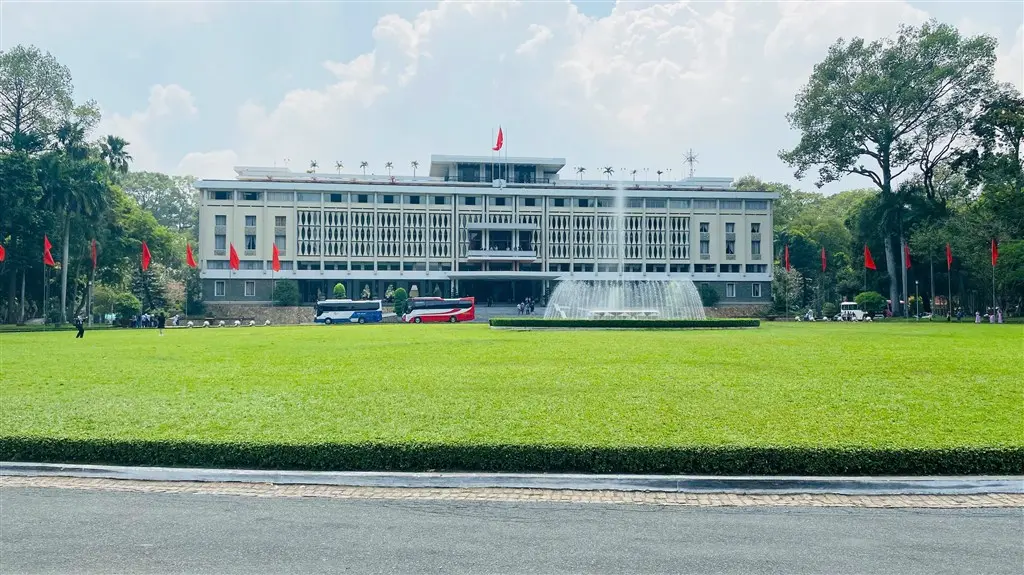Welcome! EssentialVietNamtravel.com is here to help you host a visitor from Vietnam. Food forms a cornerstone of Vietnamese culture. Sharing a meal is an act of hospitality and connection. Knowing what food to have for a visitor from vietnam can transform a simple visit into a memorable experience. This guide provides clear, practical advice. We aim to give you informational insights and meal planning strategies. You will find recommendations that cater to a positive culinary experience. Our goal is your guest’s satisfaction.
Many hosts wonder about the best dishes to offer. The answer involves understanding a few key elements of Vietnamese cuisine. Freshness is paramount. Balance of flavors and textures is crucial. Aroma plays a significant role. The unique taste of umami is often present. This guide will explore specific dishes. We will also discuss broader concepts for hosting. We want you to feel confident.
We want your guest to feel welcomed and appreciated. Let us explore how to achieve this. Food is a significant part of hospitality for Vietnamese culture. The host has some resources to prepare or procure suitable food. This guide assumes your visitor is open to trying local or well-prepared Vietnamese food.
Top Authentic Vietnamese Dishes Your Visitor Will Love: Featuring Pho Bo & Goi Cuon for Memorable Guest Dining
When considering what food to have for a visitor from vietnam, starting with iconic dishes is a wise choice. Pho Bo and Goi Cuon are excellent starting points. They represent the heart of Vietnamese gastronomy and are beloved by many. Offering these shows thoughtfulness and an appreciation for their culture. Guest dining should be a pleasant experience. These dishes offer familiar comfort and delightful flavors.
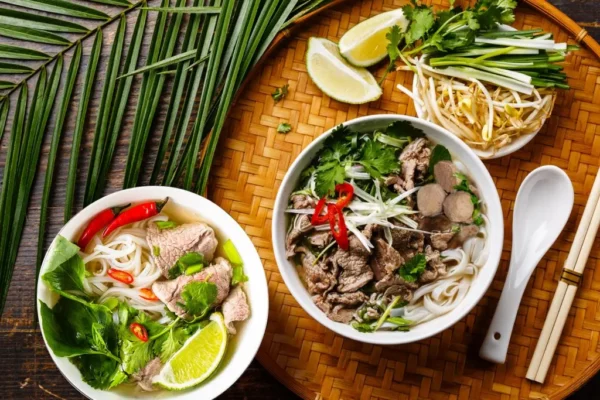
Pho Bo (Beef Noodle Soup) is arguably Vietnam’s most famous culinary export. This dish is a type of noodle soup. Its main ingredient is typically beef, though chicken versions (Pho Ga) are also popular. A rich, aromatic broth forms its soul. This broth simmers for hours with beef bones, charred ginger, onion, star anise, cinnamon, and other spices. The result is a complex, deeply savory liquid. Rice noodles, tender slices of beef (various cuts can be used, from brisket to rare tenderloin), and an abundance of fresh herbs complete the bowl.
Common herbs include Thai basil, cilantro, and culantro. Bean sprouts, lime wedges, and sliced chilies are served alongside. Guests can customize their bowl to their liking. The preparation difficulty can be medium to high if making the broth from scratch. However, quality pre-made broths or restaurant options exist. The taste profile is balanced and deeply satisfying.
To serve Pho Bo authentically for your visitor from Vietnam:
- Prepare the noodles according to package directions. They should be soft but not mushy.
- Arrange a portion of noodles in each bowl.
- Top with cooked beef slices. If using rare beef, place it thinly sliced over the hot noodles.
- Ladle the steaming hot broth over the noodles and beef. The heat will cook the rare beef.
- Serve immediately with a platter of fresh herbs, bean sprouts, lime wedges, and chili. Fish sauce and hoisin sauce are common condiments offered at the table. This dish exemplifies the Vietnamese culinary principle of freshness and extensive herb use. The aroma is a key part of the experience. Understanding Vietnamese palates means recognizing the desire for this fresh, vibrant component.
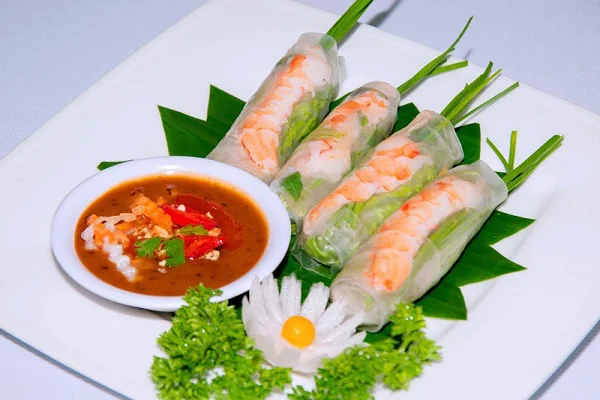
Goi Cuon (Fresh Spring Rolls) offer a lighter, refreshing counterpoint. This dish is a type of fresh spring roll. Its main ingredient is often shrimp, though pork, chicken, or tofu are also common. These are not the fried spring rolls found in some other Asian cuisines. Instead, rice paper (banh trang) is softened and filled with cooked shrimp, vermicelli noodles, lettuce, mint, and other fresh herbs.
The rolls are served chilled or at room temperature. A key accompaniment is a dipping sauce. Peanut sauce is very popular, as is a nuoc cham (fish sauce-based dipping sauce). Goi Cuon are relatively easy to assemble. If limited time, then choose Goi Cuon. They are a testament to rice paper versatility.
To prepare Goi Cuon for your visitor:
- Cook shrimp and thinly slice pork (if using). Prepare vermicelli noodles.
- Wash and prepare all herbs and lettuce. Common herbs include mint and chives.
- Have a shallow dish of warm water ready to soften the rice paper. Dip one sheet at a time for a few seconds until pliable.
- Lay the softened rice paper flat. Arrange a small amount of lettuce, vermicelli, herbs, shrimp, and pork on the lower third of the paper.
- Fold the sides inward, then tightly roll from the bottom up, like a burrito.
- Serve with your chosen dipping sauce. Peanut sauce can be made by combining hoisin sauce, peanut butter, water, a touch of sugar, and sometimes coconut milk. Goi Cuon showcase freshness and texture. They are visually appealing and offer a delightful contrast of soft, crunchy, and chewy elements. This food suitability for visitors is high due to its fresh, non-spicy nature. EssentialVietNamtravel.com notes that these dishes provide a wonderful introduction. They represent authenticity and are generally well-received. When thinking about what food to have for a visitor from vietnam, these two are champions.
Planning the Perfect Shared Meal: Culinary Recommendations Beyond the Basics, Including Bun Cha & Com Tam When Hosting Vietnamese Friends
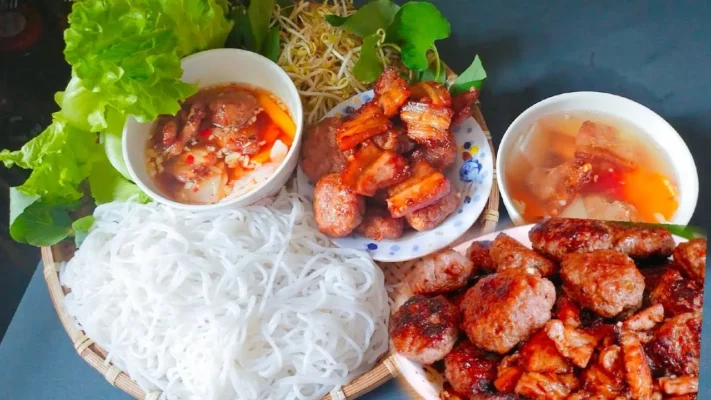
Moving beyond individual showcase dishes, planning a shared meal involves considering a variety of tastes and textures. Vietnamese meals are often communal. Several dishes are placed in the center of the table. Diners share them, typically with individual bowls of rice. This approach to hosting Vietnamese friends fosters connection and conversation.
When you think about what food to have for a visitor from vietnam in this context, Bun Cha and Com Tam are excellent choices. They add variety and are deeply rooted in Vietnamese culinary tradition. For a complete meal, then include rice, especially with Com Tam or as an accompaniment to other savory dishes.
Bun Cha (Grilled Pork with Noodles) is a specialty of Hanoi, the capital of Vietnam. It consists of grilled fatty pork (cha vien) and pork belly (cha mieng) served in a bowl of diluted, sweetened fish sauce with pickled carrots and green papaya. Alongside this, a generous platter of fresh vermicelli noodles (bun) and a mountain of fresh herbs and lettuce are provided.
Diners typically dip the noodles and herbs into the sauce with the pork, or create small combined bites. The flavor profile is a classic sweet-sour-salty-spicy harmony, though the “spicy” element usually comes from fresh chilies offered on the side. If guest prefers savory, then offer Bun Cha. The preparation effort for Bun Cha can be moderate, mainly involving marinating and grilling the pork.
Steps to prepare and serve Bun Cha for your guest:
- Marinate the Pork: Combine minced pork for patties and sliced pork belly with shallots, garlic, fish sauce, sugar, black pepper, and a touch of caramel sauce for color (optional). Marinate for at least 30 minutes.
- Prepare the Dipping Sauce (Nuoc Cham Pha): This is crucial. Mix fish sauce, sugar, lime juice or rice vinegar, and water. Adjust to achieve a balance of sweet, sour, and salty. Add finely minced garlic and chili to taste. Thinly sliced pickled carrots and green papaya (or kohlrabi) are traditionally added to the sauce.
- Grill the Pork: Grill the pork patties and pork belly until slightly charred and cooked through. Traditionally, this is done over charcoal for the best aroma.
- Cook Vermicelli Noodles: Prepare fresh white rice vermicelli noodles according to package instructions.
- Prepare Herbs and Vegetables: Wash and arrange a platter of various herbs (like perilla, mint, cilantro, lettuce) and sometimes bean sprouts.
- Assemble: Place portions of the grilled pork directly into bowls of the dipping sauce. Serve with separate plates of vermicelli noodles and the herb platter. Guests will combine these elements themselves. Bun Cha offers a vibrant, interactive dining experience. The combination of smoky grilled meat, tangy sauce, fresh noodles, and aromatic herbs is a hallmark of Vietnamese cuisine. This dish is a wonderful example of the balance sought in Vietnamese food.
Com Tam (Broken Rice) is a popular dish from Southern Vietnam. The “tam” refers to broken rice grains. These fractured grains were traditionally a byproduct of the milling process and were cheaper. They have a unique texture, softer and good at absorbing flavors. Com Tam is typically served as a platter with various toppings. A common combination includes grilled pork chop (suon nuong), shredded pork skin (bi), a steamed pork and egg custard (cha trung hap), and a fried egg (trung op la). It’s often accompanied by pickled vegetables (do chua), sliced cucumbers, tomatoes, and a small bowl of nuoc cham.
EssentialVietNamtravel.com suggests the following for Com Tam:
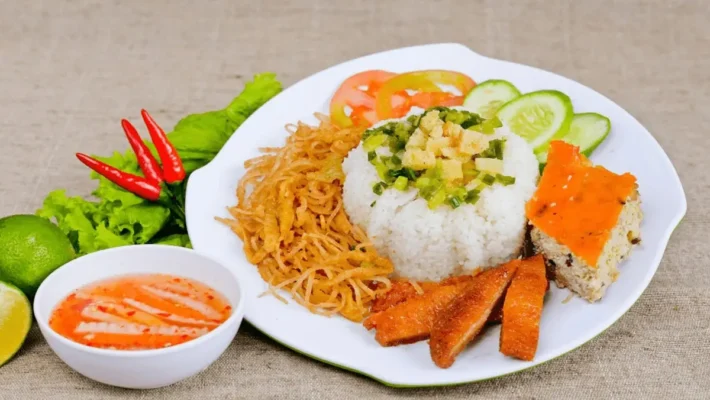
- Cook the Broken Rice: Wash the broken rice and cook it as you would regular rice, though it may require slightly less water and cooks faster.
- Prepare the Toppings:
- Suon Nuong (Grilled Pork Chop): Marinate thin pork chops in a mixture of lemongrass, garlic, shallots, fish sauce, sugar, and soy sauce. Grill or pan-fry until caramelized and cooked.
- Bi (Shredded Pork Skin): This involves cooked pork skin, thinly sliced, mixed with toasted rice powder (thinh) and sometimes lean pork. It can be bought pre-made from Asian markets.
- Cha Trung Hap (Steamed Pork and Egg Custard): Mix ground pork with wood ear mushrooms, cellophane noodles, eggs, fish sauce, and seasonings. Steam until set. The top is often colored with annatto oil or egg yolk.
- Trung Op La (Fried Egg): Fry an egg, usually sunny-side up or over easy.
- Prepare Accompaniments: Slice cucumbers and tomatoes. Make or buy pickled carrots and daikon. Prepare nuoc cham.
- Assemble the Plate: Place a generous portion of broken rice on a plate. Artfully arrange the pork chop, a spoonful of bi, a slice of cha trung hap, and the fried egg around the rice. Add pickled vegetables, cucumber, and tomato slices. Serve with a side of nuoc cham. Com Tam is a hearty and satisfying meal. The variety of textures and flavors on one plate is a key characteristic. This meal context of hosting can be wonderfully addressed with such a comprehensive dish. These recommendations cater to recipe seeking and cultural insight search intents.
Planning a Trip to Vietnam?
Or perhaps your visitor is planning their next journey? Find the best flight deals to or from Vietnam and make the travel seamless.
Find Flights on Kiwi.com
Explore Deals on WayAway
(These are affiliate links. We may earn a commission if you book through them, at no extra cost to you. Thanks for your support!)
Ensuring Visitor Comfort Through Vietnamese Gastronomy: Key Food Considerations and Hospitality Tips
Ensuring your visitor from Vietnam feels comfortable and well-cared for extends beyond just choosing famous dishes. It involves understanding Vietnamese gastronomy at a deeper level, considering dietary preferences, and practicing good hospitality. Food is intrinsically linked to well-being in Vietnamese culture, so thoughtfulness in this area is greatly appreciated. The meal objective is always guest satisfaction. EssentialVietNamtravel.com emphasizes that to show hospitality, then ask about preferences.
One of the primary dietary considerations is the prevalence of certain ingredients. Fish sauce (nuoc mam) is central to Vietnamese cooking, providing umami and saltiness. While it is a defining flavor, be aware if your guest has any strong aversions, though this is rare for Vietnamese natives. Shellfish, particularly shrimp, is common.
If there’s any allergy consideration, like shellfish, it is critically important to be aware and avoid cross-contamination. Another point is spiciness. While many Vietnamese dishes incorporate chili, it’s often served as a condiment, allowing individuals to adjust the heat. It’s wise to offer chili on the side rather than incorporating it heavily into the main dish, unless you know your guest’s preference.
Understanding Vietnamese palates also means recognizing the importance of freshness. Vegetables and herbs are not mere garnishes; they are integral components contributing flavor, texture, and aroma. Ensure these are crisp and vibrant. A common characteristic of Vietnamese cuisine is its balance. Flavors are layered – sweet, sour, salty, sometimes bitter, and spicy. This balance is often achieved through dipping sauces and the fresh accompaniments. Avoid overwhelmingly strong or singular flavors unless it’s a specific characteristic of a dish.
Key Hospitality Tips for Food:
- Ask About Preferences: Before planning your menu, politely inquire if your guest has any allergies, strong dislikes, or particular dishes they are hoping to try or miss from home. This shows immense consideration. Perhaps they have a specific fermented condiment preference or even specific herb aversions, though the latter is less common with the generally loved array of Vietnamese herbs like mint.
- Offer Variety: If possible, offer a few different dishes, especially if serving a communal meal. This allows your guest to choose what appeals most to them. This aligns with the traditional Vietnamese way of eating.
- Explain the Food (If Appropriate): If you’ve prepared something, briefly explaining what it is or a key ingredient can be a nice touch, especially if it’s a dish they might not be familiar with (if you are not Vietnamese yourself and are trying to cook Vietnamese food for them).
- Don’t Overwhelm: While variety is good, don’t prepare an excessive amount of food that might make your guest feel pressured to eat more than they are comfortable with.
- Include Fresh Fruit: Vietnamese people love fresh fruit. Offering a platter of seasonal fruits like mango, pineapple, watermelon, or more exotic fruit familiarity like dragon fruit or longan, if available, for dessert or as a snack is always a welcome gesture.
- Beverages: Offer water, tea (unsweetened green tea or jasmine tea is common), or light Vietnamese beverages. Popular Vietnamese desserts and drinks can be a separate delightful exploration.
- Observe Vietnamese Dining Etiquette (If Applicable): If you are dining with a group that includes other Vietnamese people, or if you are very familiar with the culture, you might observe certain etiquette points. However, as a host in your own home, your primary goal is to make your guest comfortable. They will likely not expect you to be an expert in Vietnamese etiquette unless you are Vietnamese yourself. Simple politeness and attentiveness go a long way.
Some individuals may hold traditional medicine food beliefs, where certain foods are considered “heating” or “cooling” and are consumed to maintain balance. This is a nuanced area, and unless your guest brings it up, it’s generally not something a host needs to deeply plan for, but it highlights the thoughtful relationship many Vietnamese have with food.
The primary aim is a positive visitor experience. Your effort in considering these aspects, even if you don’t get everything “perfect,” will be recognized and appreciated as a sign of genuine hospitality. This approach supports the informational and cultural insight search intents of users looking up what food to have for a visitor from vietnam.
Delighting Your Guest: Exploring More Authentic Vietnamese Cuisine like Banh Xeo for a Rich Cross-Cultural Food Experience
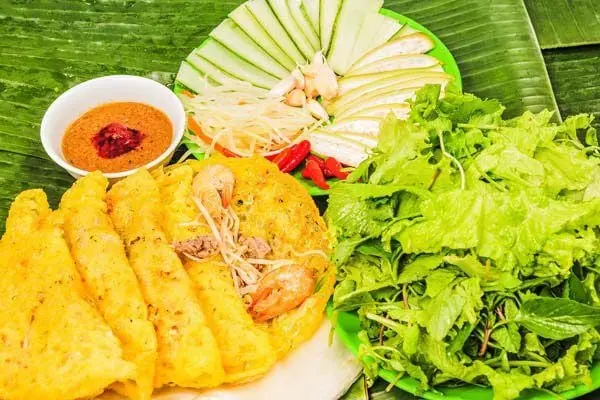
Once you’ve covered some of the iconic dishes and established a comfortable dining environment, you might want to explore other authentic Vietnamese cuisine options to further delight your visitor. Introducing them to dishes like Banh Xeo can offer a rich cross-cultural food experience, showcasing the diversity and ingenuity of Vietnamese cooking. This is about more than just sustenance; it’s about sharing culture and creating enjoyable memories. EssentialVietNamtravel.com believes that such culinary explorations enhance the visitor’s experience significantly.
Banh Xeo (Crispy Savory Pancake) is a fantastic dish that is both delicious and fun to eat. The name literally means “sizzling cake,” referring to the sound the batter makes when it hits the hot skillet. It’s a large, thin, and crispy crepe-like pancake made from rice flour, water, turmeric powder (for color and a mild earthy flavor), and often coconut milk.
The pancake is typically filled with bean sprouts, shrimp, and thinly sliced pork or chicken. It’s folded in half and served with a generous platter of fresh lettuce leaves and various aromatic herbs like mint, perilla, and mustard leaves. The way to eat Banh Xeo is interactive: diners tear off a piece of the crispy pancake, wrap it in a lettuce leaf with other herbs, and then dip it into nuoc cham (the ubiquitous fish sauce-based dipping sauce).
Why Banh Xeo is a great choice for a visitor from Vietnam:
- Authenticity: It’s a beloved dish throughout Vietnam, with regional variations in size and fillings. Offering this shows you’ve explored beyond the most globally famous dishes.
- Texture and Flavor: The contrast between the crispy pancake, the savory filling, and the fresh, cooling herbs is a hallmark of Vietnamese cuisine. The flavor profile is a delightful balance.
- Interactive Eating: The process of wrapping and dipping makes it an engaging meal.
- Visually Appealing: The vibrant yellow of the pancake from the turmeric and the colorful array of fresh greens make for an appetizing presentation.
Tips for Preparing or Sourcing Banh Xeo:
- The Batter: Achieving the right batter consistency is key for a crispy Banh Xeo. It should be thin. Many Asian grocery stores sell Banh Xeo premix, which simplifies the process. If making from scratch, rice flour, turmeric, salt, and water are essential. Coconut milk adds richness and flavor. Letting the batter rest can improve its texture.
- The Pan: A large, non-stick skillet or crepe pan works best. The pan needs to be very hot before adding the batter.
- Cooking Process: Swirl a thin layer of batter to cover the pan. Add the cooked pork and shrimp, then a generous handful of bean sprouts. Cook until the edges are golden and crispy and the sprouts are tender-crisp. Fold the pancake in half.
- Serving: Serve immediately with a large platter of mixed lettuce and fresh herbs, and a bowl of nuoc cham. Some regional specialty ingredients might find their way into the herb platter depending on availability.
- Restaurant Option: If preparation seems daunting, many good Vietnamese restaurants offer excellent Banh Xeo. This can be a great way to share the experience without the cooking stress.
Beyond Banh Xeo, consider other regional specialties if you know your guest’s origin or preferences. For instance, if they are from Central Vietnam, you might explore dishes like Mi Quang (turmeric noodles) or Bun Bo Hue (spicy beef noodle soup, if they enjoy spice). If authenticity is key, then use traditional ingredients. Sourcing these ingredients might require a trip to an Asian market, but the effort often pays off in flavor.
This exploration demonstrates a genuine interest in their culture and cuisine. Cooking for international guests can be a journey of discovery for the host as well. This shows a commitment to providing a truly authentic and thoughtful culinary experience when deciding what food to have for a visitor from vietnam. The shared meal becomes a platform for cultural exchange.
Simple and Delicious Food Ideas When Preparing for Your Visitor from Vietnam
Sometimes, elaborate preparations aren’t feasible due to time constraints or cooking expertise. Yet, you still want to offer something delicious and appropriate when considering what food to have for a visitor from vietnam. EssentialVietNamtravel.com assures you that simple can still be incredibly satisfying and authentically Vietnamese. The key is to focus on freshness, quality ingredients, and the inherent balance of flavors that characterizes Vietnamese cuisine. A host aims to provide a pleasant culinary experience, and this can be achieved without complex recipes.
One of the simplest yet most fundamental elements is perfectly cooked rice (Com). For many Vietnamese, a meal isn’t complete without it. Use good quality long-grain rice, such as Jasmine rice, which is fragrant and slightly sticky.
Step 1: Rinse the rice several times until the water runs clearer. This removes excess starch. * **
Step 2: Use the correct water-to-rice ratio. A common method is the first knuckle rule: after leveling the rice in the pot, add water until it reaches the first knuckle of your index finger when your fingertip touches the surface of the rice. Or, generally, about 1 part rice to 1.25-1.5 parts water for stovetop, or as per your rice cooker’s instructions.
Step 3: Bring to a boil, then cover and simmer on low heat for 15-20 minutes, or until water is absorbed and rice is tender. Do not lift the lid during simmering.
Step 4: Let it rest, covered, for 5-10 minutes off the heat before fluffing with a fork.
This perfectly cooked rice can be the base for many simple yet satisfying meals.
Simple Savory Dishes to Accompany Rice:
- Thit Kho To (Caramelized Pork and Eggs in Clay Pot): While it sounds complex, a simplified version can be made. Braise pork belly and hard-boiled eggs in a sauce of fish sauce, sugar (or caramel sauce), coconut water (or plain water), garlic, and shallots until the pork is tender and the sauce is rich and slightly thickened. This dish offers a wonderful umami and savory-sweet balance.
- Ca Kho To (Caramelized Fish in Clay Pot): Similar to Thit Kho To, but uses fish (catfish is traditional). It’s a deeply flavorful dish.
- Rau Muong Xao Toi (Stir-fried Water Spinach with Garlic): Water spinach (ong choy) is quickly stir-fried with lots of garlic and a touch of fish sauce or salt. It’s simple, quick, and a very common vegetable dish. If water spinach isn’t available, other greens like spinach or bok choy can be substituted, though the flavor will differ. This highlights extensive herb use, or in this case, vegetable use that is common.
- Canh Chua Ca (Sour Fish Soup): A simplified version can be made with a tamarind base for sourness, fish (like tilapia or salmon chunks), tomatoes, pineapple, bean sprouts, and okra. Fresh herbs like culantro (ngo om) and rice paddy herb (ngo gai) are traditional additions if available. This soup provides a lovely sweet-sour-salty harmony.
Easy Assembly Options:
- Banh Mi (Vietnamese Sandwich): This requires minimal cooking. Purchase good quality Vietnamese baguettes (crispy on the outside, airy on the inside). Fillings can include various Vietnamese cold cuts (cha lua), pate, grilled pork or chicken (can be store-bought or simply seasoned and pan-fried), pickled carrots and daikon, cucumber, cilantro, and a swipe of mayonnaise and Maggi seasoning. This is a fantastic option for a quick lunch or casual meal. Rice paper versatility is not for Banh Mi, but the baguette’s unique texture is key.
- High-Quality Takeout: Don’t underestimate the option of ordering from a reputable Vietnamese restaurant if you’re short on time or unsure about cooking. Focus on freshness and well-reviewed establishments. This still shows you’ve thought about providing authentic food.
Remember, presentation style, even for simple dishes, can elevate the meal. Serve dishes neatly, and always include fresh herbs or a simple plate of sliced cucumbers and tomatoes if appropriate. The goal is an appetizing look that promises a balanced taste profile. These simpler options are still very much in line with providing a positive visitor experience and answer the informational and meal planning needs when wondering what food to have for a visitor from vietnam. The host has some resources to prepare or procure suitable food, and these options respect that.
The Heart of Vietnamese Hospitality: Creating a Welcoming Atmosphere with Food and a Shared Meal
Ultimately, deciding what food to have for a visitor from vietnam is deeply intertwined with the concept of Vietnamese hospitality. While the specific dishes matter, the spirit in which they are offered is paramount. EssentialVietNamtravel.com emphasizes that a shared meal is more than just eating; it’s a gesture of welcome, friendship, and respect. Creating a warm, inviting atmosphere can make even the simplest fare feel like a feast. Food is a significant part of hospitality for Vietnamese culture.
The effort you put into selecting and preparing (or thoughtfully sourcing) food speaks volumes. It shows your visitor that you care about their comfort and enjoyment. This aligns with the host’s aim to provide a pleasant culinary experience. Your visitor will likely appreciate familiar flavors or be open to new, appealing ones if presented with care. Don’t stress about achieving “perfection” according to a rigid standard. Authenticity in spirit and genuine care are often more valued.
Creating a Welcoming Atmosphere:
- Warm Welcome: Greet your guest warmly. A comfortable and relaxed environment sets the stage for an enjoyable meal.
- Comfortable Seating: Ensure there’s comfortable seating and enough space at the table.
- Engage in Conversation: Mealtime is a social occasion. Engage in pleasant conversation, show interest in your guest, and share stories. This fosters connection.
- Pace the Meal: Don’t rush the meal. Allow time for enjoyment and conversation. Vietnamese meals can be leisurely affairs.
- Offer Drinks: Have water, tea, or other suitable beverages readily available. Vietnamese beverages, like Tra Da (iced tea) or fresh fruit juices, can be a nice touch.
- Focus on Sharing: If serving multiple dishes, encourage sharing. Place dishes in the center of the table if culturally appropriate and practical.
- Consider Dessert: Popular Vietnamese desserts, often featuring ingredients like coconut milk, beans, or sticky rice, can be a delightful way to end the meal. Even a simple platter of fresh, exotic fruit familiarity is highly appreciated.
- Gratitude: Expressing that you’re happy to share a meal with them reinforces the hospitality.
Further Reading: Explore More Vietnamese Cuisine
Remember the assumptions and premises: your visitor is open to trying your food, and you aim for their happiness. The logical relationships in meal planning, such as “If authenticity is key, then use traditional ingredients,” or “To show hospitality, then ask about preferences,” guide your actions towards this goal. The experience desired is positive for everyone involved.
Even if you are not an expert in Vietnamese cuisine, your genuine effort to understand and cater to your guest’s palate will be evident. Understanding Vietnamese palates isn’t just about flavor combinations; it’s about understanding the cultural significance of food and sharing. The freshness, balance, aroma, texture, and umami are not just culinary terms; they are components of an experience that nourishes both body and spirit. From the broth sophistication of Pho to the fish sauce centrality in many dishes, each element contributes to the overall culinary landscape you are sharing.
EssentialVietNamtravel.com believes that when you approach hosting with care, thoughtfulness, and a genuine desire to connect, the food you offer becomes a powerful symbol of friendship. This approach transcends recipe seeking or mere informational queries; it touches upon cultural insight and the very heart of hospitality, making your visitor from Vietnam feel truly welcomed and valued.

